FEAST YOUR EYES
Food Porn for Dummies: Experts share their secrets
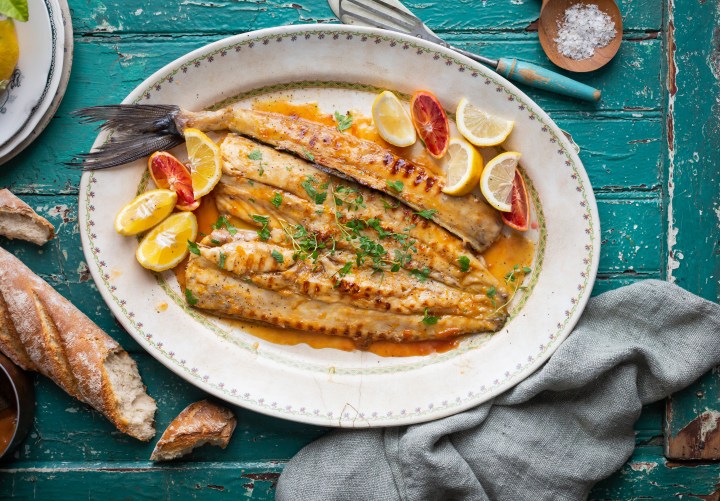
We ‘eat with our eyes’ doesn’t only mean a dish must look good, it means it must be photographed beautifully as well.
The term “food porn” has been around for ages, used to describe unrealistic and unattainable food images that are nonetheless gorgeous and we cannot get enough of them; at least no one gets hurt. Then there is the modern compulsion to take and post a pic of every meal you eat – at home or at a restaurant – and post it on social media…with varying levels of success.
This story is going to have one of two outcomes. Either you’re going to be filled with insecurity and self-doubt when it comes to your food pics and immediately cancel your Instagram account. Or, you will learn from it and set about creating better images. Me, I’m still on the fence.
On Instagram, depending on who you choose to follow, the standard is high. You can curate a newsfeed filled with gorgeousness – which is what I do – with the added bonus of recipes you can save compulsively. I’ve progressed from the old days of having only shelves filled with cookbooks to additionally an email folder full of newsletter recipes, bookmarked recipes in my browsers (laptop and phone), printouts, magazines and social media. What do I make? Yes, that’s right, the same dish I’ve known out my head for 20 years. Either that, or something spontaneously decided in the supermarket based on one ingredient I know I have at home. Like parsley.
On Facebook, it’s a different story. There we have our personal friends and sadly not all of them know how to take even halfway decent pics of their brunch. Also, it’s 2022 – surely you’ve learnt to rotate by now? Heck, there are some restaurants who need friendly advice.
I asked three amazing foodie photographers and they all said the same thing: light, preferably natural light. So the first thing you should do is disable the flash on your phone camera. Do it now. It sucks everything out of a picture and where it doesn’t, there will be harsh shadows. The other demon shadow to look out for is the one cast by your phone when there is overhead lighting. Like there is In. So. Many. Restaurants.
There’s much more to it though, especially when it’s being done professionally, and my own takeaway from this is to put way more thought into it, from practice set-ups to thoughtful composition.
Our interviewees are Claire Gunn, restaurant photographer extraordinaire and true artist in every sense of the word; Sam Linsell of Drizzle & Dip, who combines amazing recipes (which I actually do make) and stunning styling; and Pascale Butcher who has a day job in finance and is an inspiration to everyone who uses a phone camera. I love her Instagram posts so much and feel it’s criminal that she doesn’t have thousands of followers. It’s not what it’s about for her though, she told me, and she is extremely modest about her skills.
I jokingly asked her when I could come to taste her food, which is how I came to be sitting in her garden last Saturday eating delicious little almond balls filled with cranberries and coated with toasted almonds. She also baked me an amazing focaccia studded with olives she bottles herself, and rosemary. Perks of the job.
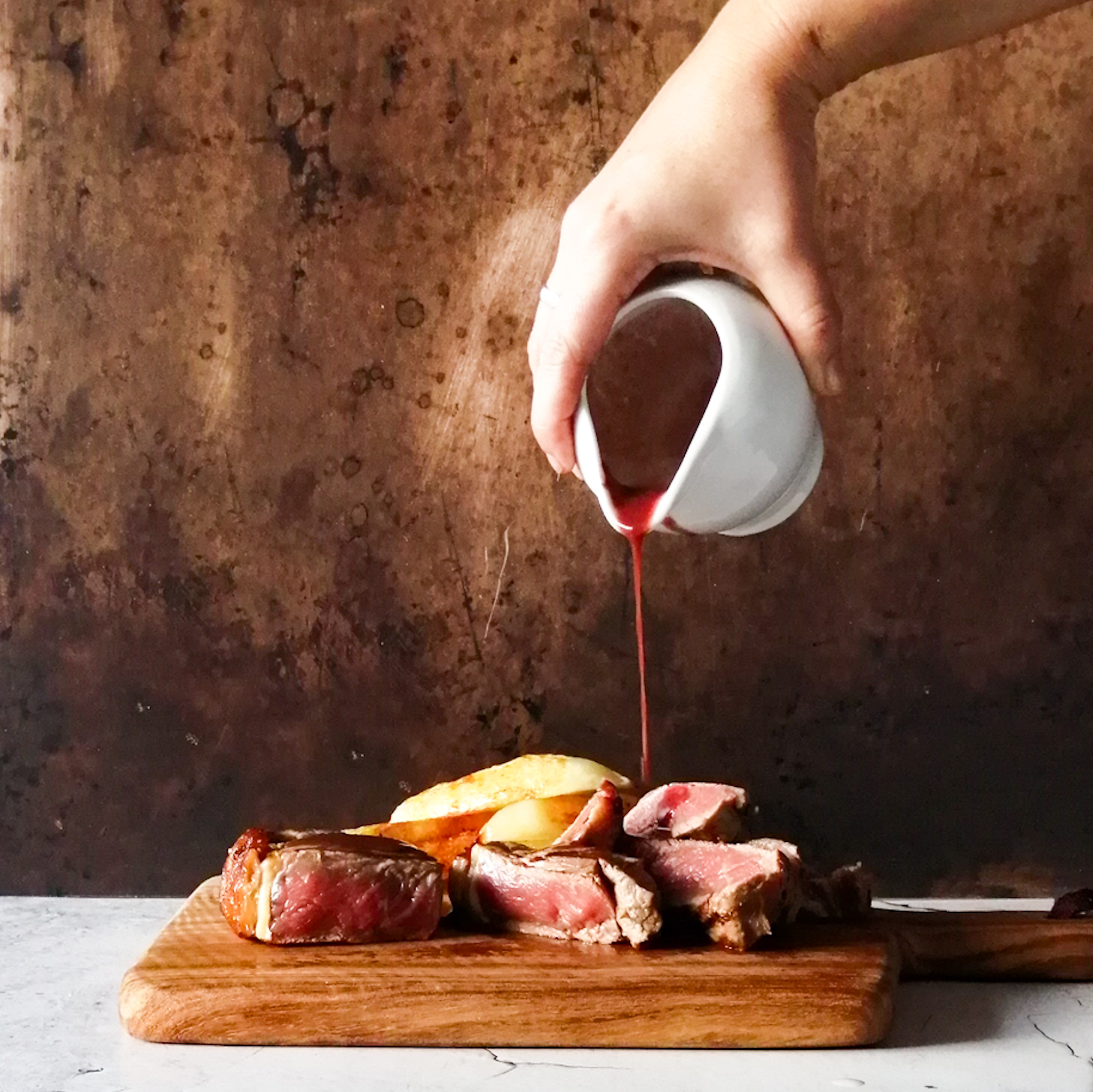
Rare rump steak, hand cut chips and a bordelaise sauce. (Photo: Pascale Butcher)
“Food was a big part of my childhood and I’ve been a foodie since before that was an actual term. I’ve been paying attention to food styling and photography since late 2017, early 2018,” said Butcher.
The journey has entailed a lot of practice and experimentation, a lot of really bad shots and a lot of having to remake dishes because the photo came out poorly.
“I must have made brinjal schnitzel about five times before giving up on that photo – it’s a good thing it tastes so good.”
Butcher uses an old Huawei P9 (she thinks), and the free version of Lightroom to touch up. “I have a rudimentary studio in my study at home which has good natural light for most of the day. It’s a little limiting angle-wise but I manage.
“I’ve learnt to do things bit by bit, to construct the shot slowly and to view the shot from the camera more than the human eye. I find that some of the best shots show the leftovers of what went into the shot: making hollandaise, showing the egg shells; bread – breadcrumbs and butter on the knife.
“I used to go into Mr Price regularly and buy plates and bowls – not so much anymore – I find it’s better to use older, less modern dishes and utensils so I go to Milnerton market every so often. The more natural coloured and textured props tend to translate better in my view.
“I use flatlay backgrounds (different flat pieces of board on which objects are placed and shot from above) and I’ve constructed a tower of old textbooks and bits from around the home to make a DIY C-stand (a heavy-duty tripod). I’ll eventually get around to buying a proper one. I often take test shots for getting the angle right – not using the food itself but place holders so there’s no pressure of the food losing its lustre. If I don’t like the light I often give it half an hour and try again. I often switch backgrounds and dishes around to see what looks better. I mostly follow the “odd number” rule (photograph five muffins rather than six).”
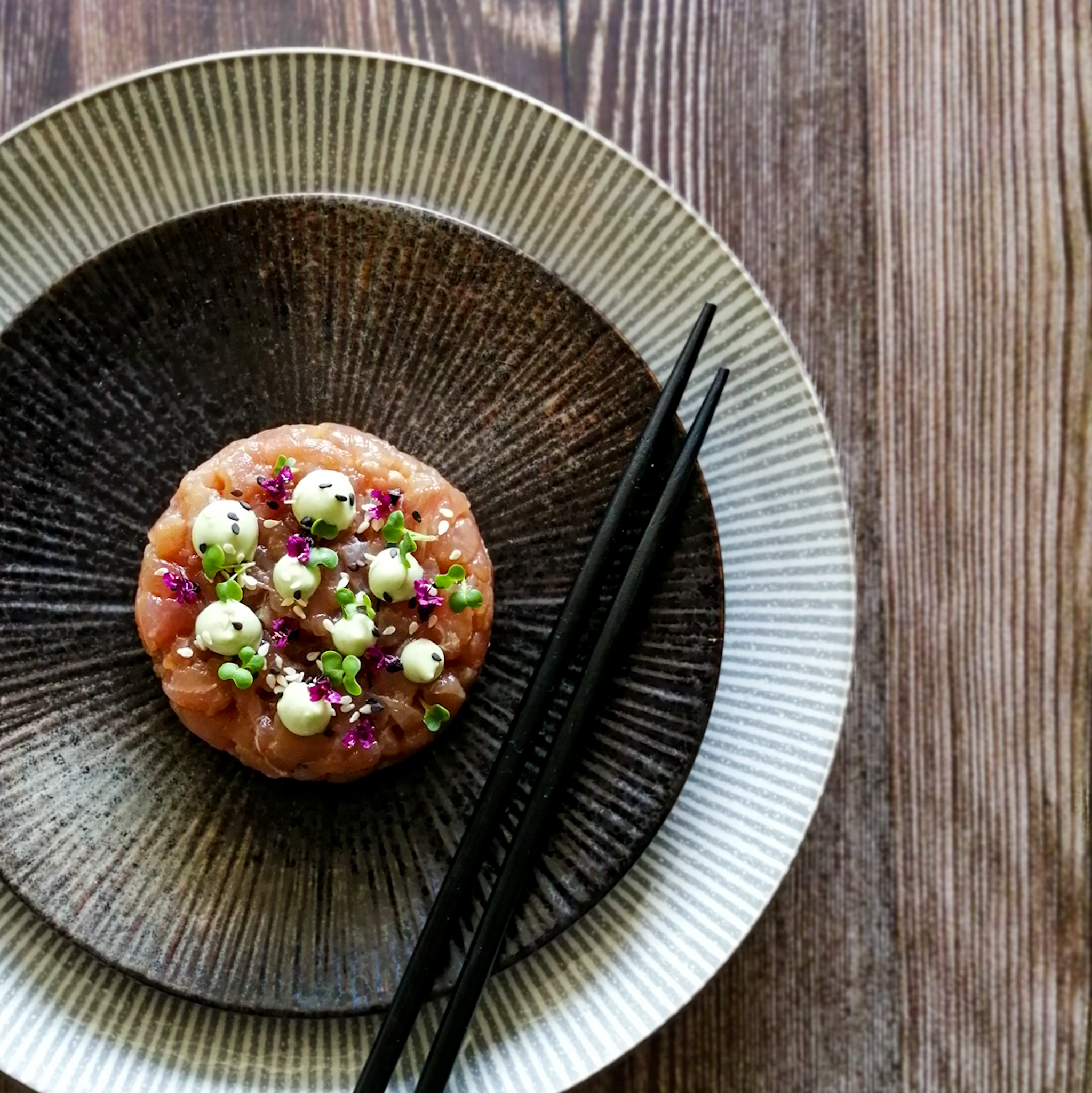
Tuna tartare: dressing of soya sauce and ponzu, with wasabi mayo and microgreens. (Photo: Pascale Butcher)
Pictures are supposed to tell a story, said Butcher; they’re meant to conjure up the essence and memories of Christmas or summer braais, a picnic. “So when they’re done right, they transport us and make us feel something; and we love things that make us feel.”
Even so, there’s less pressure to tell that story than a professional might be under, she said. “I just look for a good balance of colour and light, clarity of the object/s, complementary elements in the picture and making it look as delicious as it was to eat. And that I get to stand back, look at it and say: ‘Yeah, I like that picture, I’m proud of that’.”
The biggest lesson, advised Butcher, is “less is more” – just because you made enough food for four doesn’t mean you need to photograph for four.
“I’ve actually always had a real issue with the fake nature of some food photography (you’ve heard the stories about painting burger patties with varnish to make them look juicier) but I’ve come around to some of the hacks. Often undercooking food makes for a better picture – like sausages look better half cooked. Often things need to be stacked to get a better picture, like the garnish for a soup sinks unless you construct it atop of a smaller bowl and then pour the soup around it. Burgers need to be stacked to the front to be able to see the ingredient layers.
“Paying attention to light and shadows, utilising depth of field in your photos and incorporating motion (the drizzle or the pour) and hands makes the pictures more interesting.”

Dates, walnut and blue cheese sausage rolls with tzatziki on the side. (Photo: Pascale Butcher)
Claire Gunn not only has an art background, she was also once a chef. “When I was much younger I was always obsessed with restaurants, hotels and cafes – anything related – where people go to gather and chefs make something spectacular for everyone to enjoy. So the idea of the food industry and the hospitality industry was interesting to me,” she said.
“Also because my mom was constantly hosting dinner parties and lunches and things like that so the whole behind the scenes was something that I was often involved in.”
Long before that, Gunn was initially drawn to photography when she was at school in Durban, around the age of 15 or 16. Art was a subject and she could specialise in photography. “It wasn’t like they taught you – you just had to offer your photography. My father and grandfather had dabbled in photography and darkroom development so that was something they were happy to support.”
When she finished school, Gunn decided she wanted to do a fine art degree at Michaelis, where photography was a subject. “Once again, they don’t teach how to use a camera. They make you use a pinhole camera which is basically like a biscuit tin with a hole in it which you have to make yourself, then they give some very abstract concepts that you have to create images with and when you do your own interpretation of that, if it doesn’t fit their bill, they don’t like it.” So that didn’t work out. Next was a six-month course at Ruth Prowse School of Art and Gunn took a lot of pictures of her goth friends. “Anyone who had a tattoo, anyone who dressed in goth clothing – because that was the style back then, the expression. They put me through to the advanced course but at that stage I decided I rather wanted to go to the UK and be a chef,” she said.
While working as a pastry chef at the Arabella near Hermanus, Gunn acquired a point-and-shoot camera with her cellphone contract, back in the days there were cool free gifts to motivate signing on the dotted line. “I started taking pictures of the chefs working, exploring my storytelling by taking a picture of a chef over his shoulder and what he was doing over a chopping board, the rush of service… with a very basic camera it was, well, basic. The point is, it was the desire to tell the story with a picture of what it’s like to be in the kitchen,” she said.
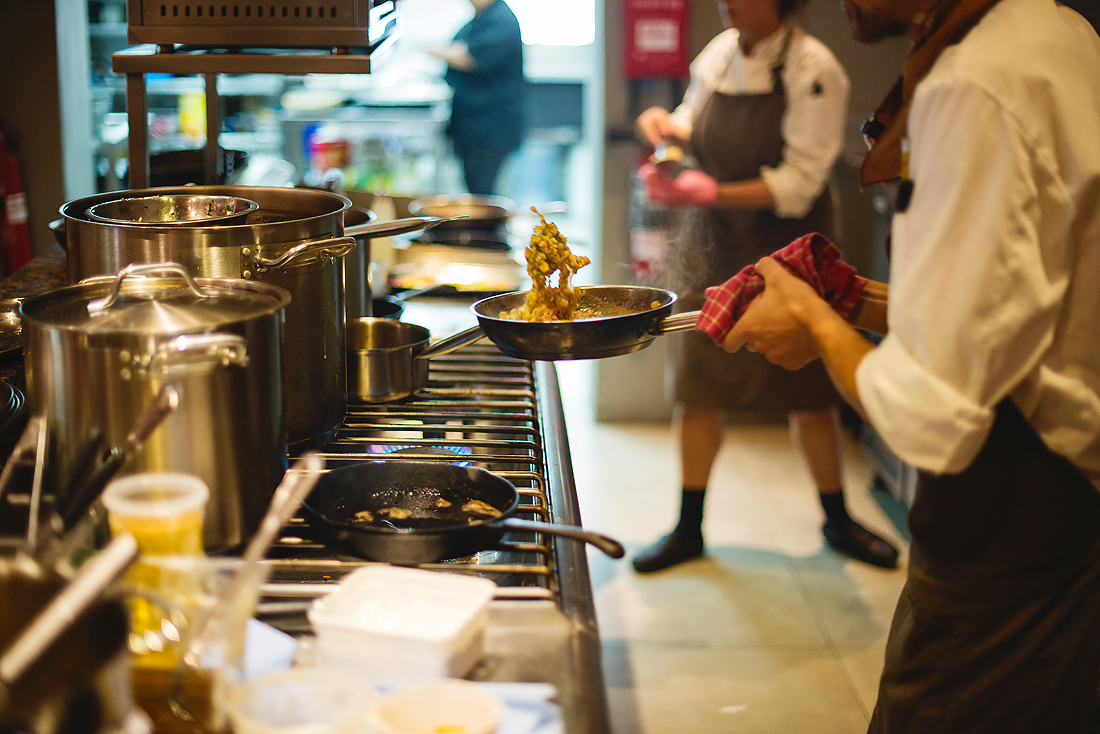
Kitchen life documented by Claire Gunn: ‘If I was to give up all other aspects of photography and stick with just one, it would be kitchen documentary.’ (Photo: Claire Gunn)
Changing direction is a normal thing for Gunn, she said, once she feels she has exhausted a particular avenue and needs a new one that requires an equal amount of energy. She became a part time chef, doing private catering for lords and ladies. “Literally,” she chuckled. At the same time she decided she needed a photography career which she began with weddings, and later portraiture and children’s parties. “Which are fantastic,” she said. “They’re the same as being in a kitchen because you have to run around and get things and it’s very time sensitive because children run out of energy very quickly so you have to strike while the iron is hot – get it in, get it out because it’s gone in a minute,” she laughed.
In 2014, a chef friend asked if Gunn would shoot her food, and on the same day another chef she’d been working with in catering asked the same thing. “It was all very synchronistic so I thought let me look into this. From that day onwards I got this huge influx of restaurants asking me to shoot and obviously I haven’t stopped since then,” she said.
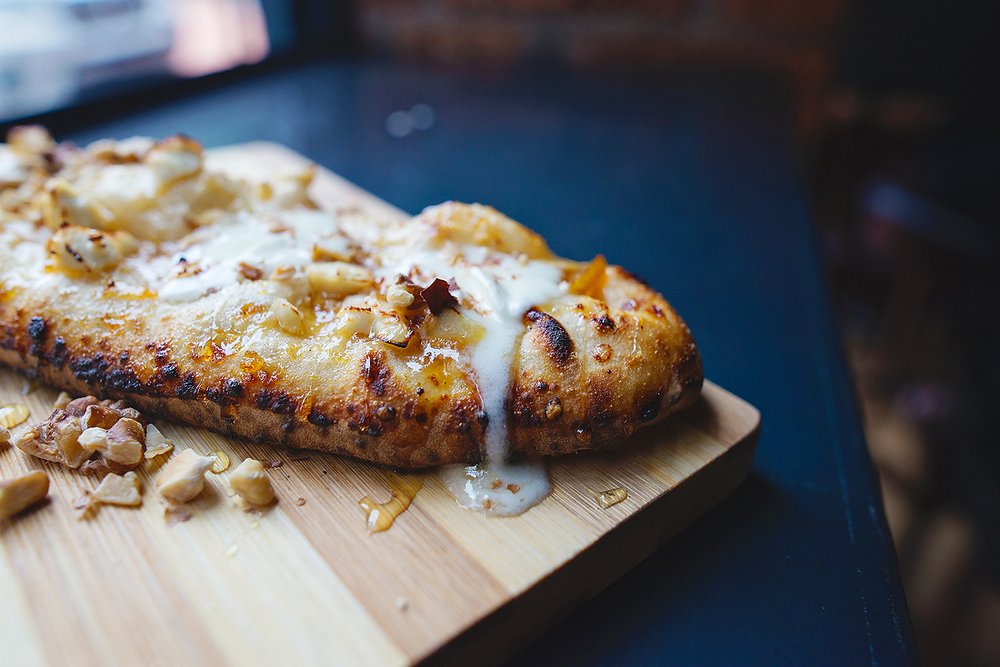
For the shooting of dishes, Claire Gunn looks for the best natural light. There’s no styling or spraying things, just the food as the chef would serve it. (Photo: Claire Gunn)
How a food shoot usually works is that someone will have a need and Gunn must fulfil that need. “So talking about it conceptually first is obviously the thing. It’s a commissioned piece or collection and that usually has a brief that goes with it.
“I wouldn’t necessarily consider that to be the primary way an artist could work; a commercial artist works like that, a fine artist creates whatever the bloody hell they want to, so I find oftentimes with an artist there is always this push and pull and this inner fight of creating something someone has asked for and creating something you would create if you were not working for money. Commercially as an artist my job is to make sure the client gets exactly what they need and that is what is mostly at the forefront of what I’m doing. Pleasing or fulfilling what is required is number one.”
Most of the time clients want a combination of the latest dishes or all the dishes, portraits of the chefs, interiors, exteriors. What Gunn brings to the game is the documentary aspect of what it’s like to be in the restaurant environment. “All the way from what it’s like for a chef to be emptying the bins to what it’s like for a diner, the actual experience, what it looks like when they sit at the table eating, and using this cutlery, and what the lighting looks like – a literal documentary style interpretation of the experience,” she said.
Gunn anticipates the processes in the kitchen: “If the chef is standing there, he’s just put onions in the pan. I know any minute now he’s going to turn around and walk back to the pan and stir it. He’s going to have an interested look on his face, the steam is going to come out of the pan at the same time, and I can see the pastry chef is coming out of the fridge. She’s going to walk past him so it’s going to create the perfect composition, filling the space behind him.”
By doing this, the image is captured of what it’s like to be in a busy kitchen with chefs at work focusing on what they’re doing, and the hustle and bustle.
“If I was to give up all other aspects of photography and stick with just one, it would be kitchen documentary,” said Gunn.

More kitchen life documented by Claire Gunn: (Photo: Claire Gunn)
For the shooting of dishes, Gunn looks for the best natural light. There’s no styling or spraying things, just the food as the chef would serve it, she said. The photography must describe the texture, which can be achieved through lighting. “If you were to put an image directly into the sun you would be able to see all the textures as clearly as possible. You can also do this with studio lighting and I do both but I prefer to do the sun,” she said.
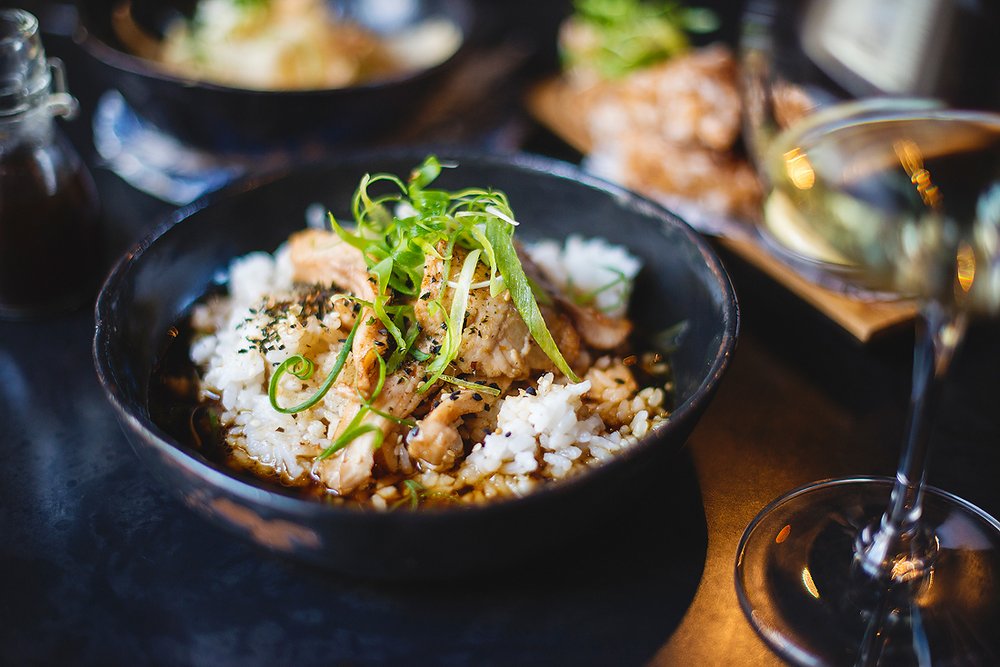
It’s important for a photograph to convey texture as it signals to the brain what the food will be like to eat. (Photo: Claire Gunn)
“Then you can see the crackle on a tuile, you can see how juicy a piece of meat is, how well cooked it is. You can tell if there’s a nice crust on the outside of the meat. What you need to do is communicate the textures. That’s what the chef has gone to great pains to demonstrate. Even now as I’m talking about that, I’m seeing that picture in my head, I’m salivating.
“Great lighting creates structure in the different components of the dish that really convinces the viewer that this is saucy, this is soft, this will be a crunchy or soft eating experience and you’re drawn into how convincingly that texture translates to you.
“You can say yes but there’s flavour and things, but less so. It’s more about the texture because that’s what the mouth starts to respond to. It knows I’m going to eat it on the left or right side of my mouth depending on how soft it is, whether I’m going to use a spoon or a fork to get in there, what the swallowing will feel like.”
Gunn learned texture vs flavour first hand when she lost her senses of smell and taste at the same time a year ago. “It didn’t prevent me from having a good eating experience because it was still a textural experience for me. It was enjoyable to be able to chew things in a particular way or what it felt like to swallow it. When I look at a photo I can tell what it’s going to feel like in my mouth.”
Something Gunn told me about which I found intriguing is about using a different lens, a lens that blurs things in the background or gives you a very shallow depth of field – something close to you is in focus and everything else is blurred out of focus. “Which is a bit closer to how the human eye and brain actually computes things,” she said. Give it a try.
Sam Linsell started her blog 13 years ago as a way to share recipes with anyone who was interested. “I was instantly hooked with the process. Back then it was very much a labour of love and a hobby,” she said.
“I was already working as a freelance food stylist but I very quickly had to learn how to be a food photographer in order to get my work seen and found on the internet. This led to the creation of my first cookbook in 2013 and then a second book published in 2015 by Penguin Random House. Everything just grew from there as did my website.
“I now work only on developing recipe content for my digital business – which includes my website and all my attached social media platforms. My website is pretty big and has a high domain authority and I earn my income through advertising and food influencer work with local brands that I love. I’ve also had to learn to become a videographer. I shoot and edit all my own content.”
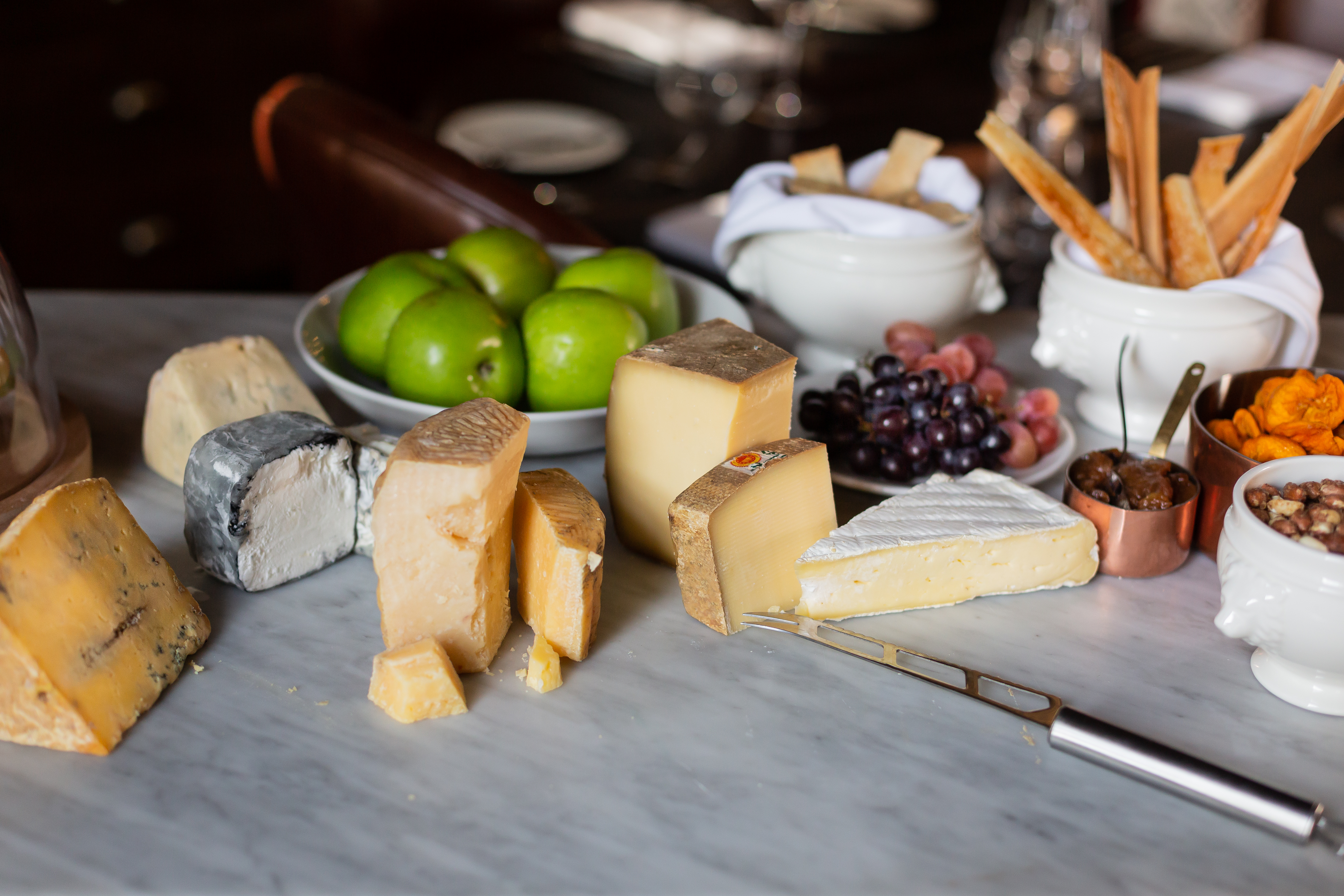
Unless you have a very expensive light set up that emulates natural light, the best and easiest way to shoot food is from a natural light source. (Photo: Sam Linsell)
Linsell has always loved photography and bought her first film SLR when she was in her 20s. “It was always just a hobby. After starting my blog I taught myself food photography which was a lot harder than it is now where you can find hundreds of incredible resources which will fast track this,” she said.
Linsell shoots all her work on a professional full frame DSLR camera with good lenses but loves to capture casual pics on her iPhone and share on social media. “With Tik Tok there is a move towards more casual photography/videography so people are becoming social media sensations using only a phone,” she said.
With the food and photography going hand in hand, I wondered which – like the chicken and the egg – had come first. “In my case the food was and always will be first,” said Linsell. “Cooking and baking is what I love to do the most and have been passionate about it all my life. I’m not ashamed to say that I love to cook because I love to eat interesting and delicious food.
“Making my food look pretty for photography and then taking the pictures is a natural progression from that. I didn’t know what I was capable of creatively until I started working as a creative. I’m very lucky that the work I do doesn’t feel like work and I’m inspired every day by it.”
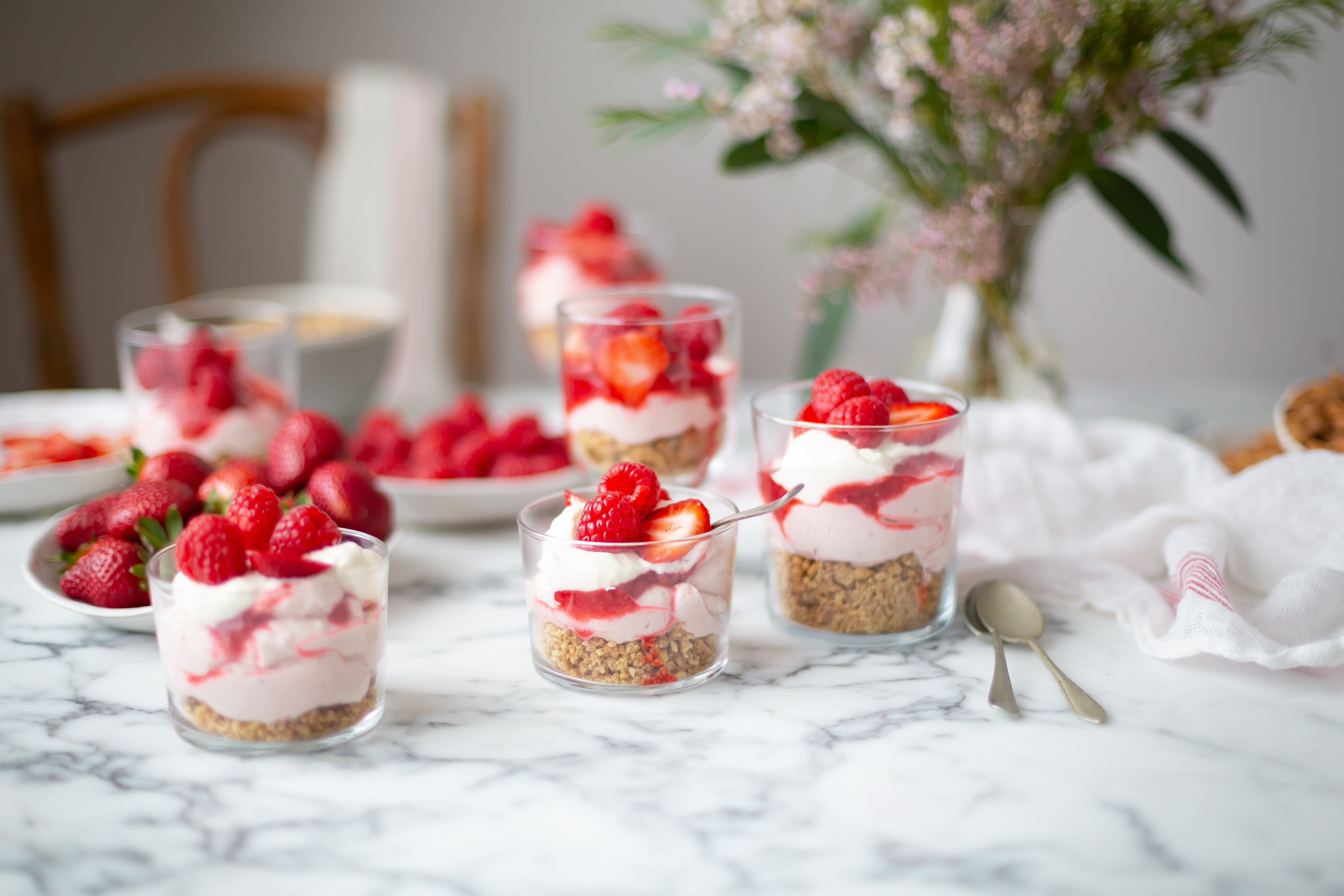
Choose the best angle to shoot the food from that makes the food look the most appetising and visible. (Photo: Sam Linsell)
With a style that is fuss-free, and approachable cooking that is delicious, Linsell leans towards a natural clean aesthetic and a neutral colour palette which allows the food to be the hero. Her top five tips for taking better photographs are below, but I also asked her to elaborate a bit. With regards the famous rule of thirds, “your eye is naturally drawn to the points where the lines on a rule of thirds grid would intercept (otherwise known as the golden ratio) so you want to put your subject matter in those positions,” she said.
When opposite colours on a colour wheel are placed next to each other, they “pop”. (It’s why purple eyeshadow on green eyes looks so good.) “Yellow against blue would be a classic example,” said Linsell. “Food often falls into the brown, beige, golden/yellow spectrum so if you placed that against a similar background it would not be as effective as placing it against a colour on the blue spectrum. Grey would also be considered on the blue spectrum.”
Angles are very important. You might have been told to always shoot food from above, and to be fair, this often works. Butcher does it, Linsell does it, Gunn does it – all of them beautifully. But there are exceptions.
“In most cases food would be shot at varying levels of 45 degrees. If the food has a lot of detail on top like a pizza, you would want to shoot this straight from the top down,” said Linsell. “If the detail is in the side and the layers like a burger, you would shoot this side on. It’s basically capturing the best angle of food like you would a model wearing a particular outfit.”
Who you choose to follow on Instagram not only fills your feed with delectable food content but can inspire you too. “I follow too many people to mention but love to follow inspiring accounts from people working creatively with food,” said Linsell. “These could be chefs posting about their interesting dishes, or food stylists and photographers posting beautiful imagery. I also love to follow travel pages. I need to fuel my wanderlust.”
Here are Sam Linsell’s six top tips for taking better food pics. The rules for taking a good food photo apply when you are shooting for any forms of media.
Light
Unless you have a very expensive light set up that emulates natural light, the best and easiest way to shoot food is from a natural light source. Start developing an understanding of light and the relationship it has on your subject. Play around trying to find the best light you can in the place where you shoot. Often this may require taking away some light, which can easily be achieved with scrim, sheets, or net fabric. Consider how much shadow you want in your shot, it can often give a lovely three-dimensional feel to your image. Shape light by bouncing it onto the subject with a white board (if necessary) or block light you don’t want in the image.
Composition
Composition is important, as a food photo is essentially a still life image. Arrange your subject matter according to the rule of thirds and ensure your main subject is placed so that it is the first thing the viewer of the image will notice. Ensure that any other props are there to support that main subject matter and not cause a distraction or lead the eye away. Stripes and geometric lines are generally not good props with food.
Styling
Shoot on an interesting surface, which sets up the mood for the image and creates texture. Use a controlled colour palette for your props that complement the food. Colours that are opposite to each other on the colour wheel will make things pop.
Angles
Choose the best angle to shoot the food from that makes the food look the most appetising and visible. In most cases it will be varying around 45 degrees. In some cases food (like a pizza) is best to be shot overhead. Other food that is stacked like a burger, will be best to shoot exactly 45 degrees side on so you can see the layers.
Restaurant
If you are shooting in a restaurant, it’s important to create a sense of place and capture the look and feel of the place. Ensure you get some background in. This could be a waiter walking in the distance, or some of the signature décor or features. A lot of intrigue can be created simply by what you put in the foreground and background of an image.
Editing & posting to Instagram
If you are going to take your food photography seriously for Instagram, take the time to edit the image to the best it can be and then decide if it’s good enough to post. If you are not editing in Photoshop or Lightroom on your desktop first, use an editing app like Snapseed to edit, and never add a strong filter. Never post more than one or two images a day. Nobody wants to be the person that only talks about themselves at a party. DM/TGIFood
Find @clairgunnphoto @pascale.de.cecile @drizzleanddip on Instagram.
Follow Bianca Coleman on Instagram @biancaleecoleman
The writer supports Ladles Of Love, which in six years has grown from serving 70 meals at its first soup kitchen, to one of the most prolific food charity organisations in South Africa.



 Become an Insider
Become an Insider
Comments - Please login in order to comment.